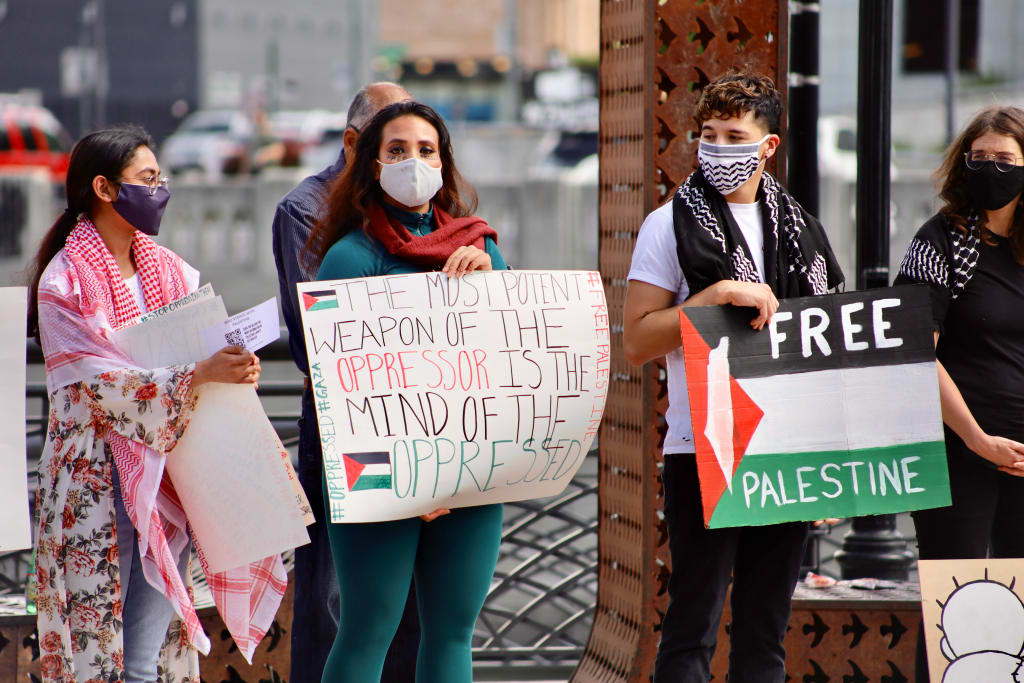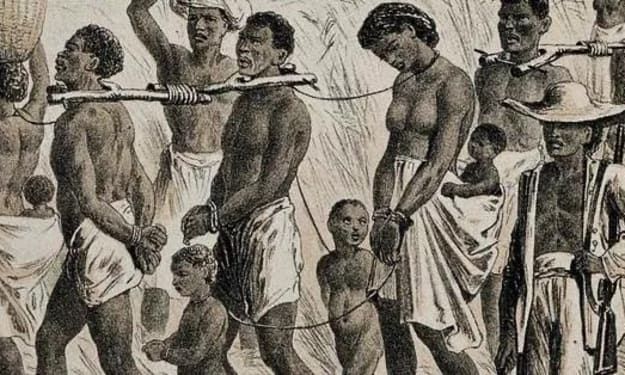
The Israel-Palestine conflict is often misunderstood as a centuries-old battle fueled by ancient religious animosity. However, the reality is that the conflict primarily revolves around two groups vying for control of the same territory. While religion does play a role, the roots of the conflict can be traced back only about a century, to the early 1900s.
During that time period, the area in the eastern Mediterranean known today as Israel-Palestine had been under the dominion of the Ottoman Empire for an extended period. It had a diverse religious composition, primarily consisting of Muslims and Christians, but also a small population of Jews who coexisted harmoniously. Two significant changes were occurring simultaneously. Firstly, a growing number of people in the region started identifying themselves as Palestinians, not solely as ethnic Arabs, embracing a distinct national identity. Secondly, in Europe, a movement known as Zionism was gaining traction, attracting more Jews who believed that Judaism encompassed not only a religious faith but also a nationality, deserving a nation of their own.
Centuries of mistreatment led many to perceive a Jewish state as their sole means of protection. They regarded their ancestral homeland in the Middle East as the most viable option for its establishment. In the early years of the 1900s, a multitude of European Jews migrated there. Following the disintegration of the Ottoman Empire and the subsequent division of the Middle East by the British and French Empires, the British assumed authority over a territory known as the British Mandate for Palestine.
Initially, the British authorities permitted the entry of Jewish individuals into the country. However, as the number of Jewish immigrants increased and they started establishing agricultural communities, friction between the Jewish and Arab populations intensified. Both groups engaged in violent acts, leading the British to impose restrictions on Jewish immigration during the 1930s. In retaliation, Jewish militias emerged to combat the local Arab population and oppose British governance.
Following the Holocaust, a significant number of Jews sought refuge in British Palestine, prompting increased global support for the establishment of a Jewish state. As tensions escalated between Arabs and Jews in the region in 1947, the United Nations sanctioned a proposal to divide British Palestine into two separate states: Israel for the Jews and Palestine for the Arabs. The city of Jerusalem, with its significant religious sites for Jews, Muslims, and Christians, was intended to become a special international zone. The objective of this plan was to provide the Jews with a homeland, establish Palestinian independence, and mitigate the sectarian violence that the British authorities could no longer manage.
Israel accepted the plan proposed by the United Nations and proclaimed its independence. However, Arabs across the region perceived the UN plan as another instance of European colonialism attempting to seize their territory. Several Arab states, which had recently gained independence themselves, initiated a conflict against Israel in an endeavor to establish a unified Arab Palestine encompassing the entire British Palestine region. Despite facing this opposition, Israel emerged victorious in the war. Nonetheless, during the course of the conflict, Israel extended beyond the boundaries outlined in the UN plan, seizing the western portion of Jerusalem and a significant portion of the land that was originally designated for Palestine. Additionally, a substantial number of Palestinians were forcibly displaced from their homes, resulting in the creation of a considerable refugee population. The descendants of these refugees currently amount to approximately 7 million individuals.
At the conclusion of the 1967 war, Israel occupied all of the territories except for the enclave of Gaza, which was controlled by Egypt, and the territory of the West Bank (named for its location west of the River Jordan), which was controlled by Jordan. This war marked the start of what would become a decades-long conflict between Arabs and Israelis. During this time, many Jewish immigrants from Arab-majority nations fled or were driven from their homes to Israel.
But then something happened that changed the course of the conflict. In 1967, Israel fought another war with neighboring Arab states. At the end of that war, Israel occupied the Golan heights of Syria, the territories of the West Bank of Jordan, as well as the enclave of Gaza and the peninsula of Egypt. As a result, Israel occupied all the territories of the Palestinian Authority, including the entire city of Jerusalem (including its holy sites).
This left Israel to manage the Palestinians, a people with whom it had been at war for decades. Then, in 1978, the US-sponsored Camp David Accords were signed between Israel and Egypt, and shortly afterward, Israel returned Sanai to Egypt in a peace settlement. At the time, this was highly controversial among the Arab world. Egyptian president Anwar Sadat's assassination was partly due to this, but it also signaled the end of the broader Arab-Israeli dispute.
Over the following decades, other Arab states gradually began to make peace with Israel, although they did not formally sign peace agreements. At the same time, Israel's military continued to occupy the West Bank and the Gaza Strip, transforming the conflict into an Israeli-Palestinian conflict. The PLO, which began in the 1960s with the aim of achieving a state for the Palestinians, continued to confront Israel, including through terrorism.
Initially, the PLO claimed all of what had been British Palestine, meaning it wanted to end the state of Israel entirely. Fighting between Israel and the PLO went on for years, even including a 1982 Israeli invasion of Lebanon to kick the group out of Beirut. The PLO later said it would accept dividing the land between Israel and Palestine, but the conflict continued.
While all of this was going on, something dramatic was happening in the occupied territories of the state of Israel: settlers were moving in.
Whether they wanted to or not, settlers built their homes on the West Bank and in the Gaza Strip. Some did so for religious reasons, others because they wanted to own the land for Israel. Some moved because housing was cheap and often subsidized by Israel.
Some settlements were cities with thousands of inhabitants; others were small communities deep in the West Bank. The settlers were accompanied by soldiers to protect them.
The growing settlements forced Palestinians off their land and divided communities. In the short term, they made the occupation far more painful for the Palestinians. In the long run, by dividing the land, they made it much harder for the Palestinians to achieve an independent state.
At the same time, something dramatic was happening in the occupied territories of the state of Israel: settlers were moving in. Whether they wanted to or not, settlers built homes in the occupied West Bank and Gaza. Some did so for religious reasons, others because they wanted to own the land for Israel and some simply because the housing was cheap and often subsidized by Israel's government. Today, there are hundreds of thousands of settlers in the occupied territories, despite the fact that the international community regards them as illegal.
At the end of the 1980s, the Palestinians' anger boiled over into the first intifada, an Arabic word for "uprising." The intifada began as protests and a boycott, but quickly escalated into violence, resulting in the deaths of hundreds of Israelis and more than 1,000 Palestinians. Meanwhile, a small group in the neighboring enclave of Gaza, dissatisfied with the PLO's secular and moderate approach, created the terrorist group Hamas, which is committed to the destruction of Israel. Today, there are hundreds of thousands of settlers in occupied territory, despite the fact that the international community regards them as illegal.
In the late 1980s, the first intifada—Arabic for “uprising”—was the result of the Palestinians’ anger at the PLO. Initially, the intifada was mostly a series of protests and a boycott, but it quickly escalated into violence, resulting in the deaths of several hundred Israelis and more than 1,000 Palestinians. In parallel, a small group of Palestinians in Gaza who were dissatisfied with the PLO formed the terrorist group Hamas.
At the beginning of the 1990s, it became clear that peace between Israel and the Palestinians was necessary, and leaders from the two sides signed the so-called Oslo Accords. The goal of the Oslo Accords was to be the grand, first step toward the eventual withdrawal of Israel from the Palestinian territories and the establishment of an independent state of Palestine.
After the Oslo Accords were signed, the Palestinian Authority was established, granting the Palestinians some autonomy in specific areas. Hardline elements on both sides objected to the Oslo Accords. Hamas launched suicide attacks to sabotage the peace process.
The Israeli right objected to the peace talks, calling Rabin a “traitor” and a “Nazi.” Shortly after Rabin signed the 2nd round of the Oslo Accords in Tel Aviv, an ultra-Zionist Israeli shot Rabin to death. This violence showed how extreme elements on both sides could use violence to frustrate peace and prolong the conflict as they sought the complete destruction of the other side. This dynamic has persisted ever since.
Negotiations aimed at finalizing the terms of peace dragged on for several years, culminating in a failed Camp David summit in 2000. As a result, Palestinians began to believe that peace would never come, leading to the Second Intifada. This second intifada was much more aggressive than the first, killing about one thousand Israelis and three thousand Palestinians by the time it ended a few years later.
The Second Intifada dramatically changes the dynamics of the conflict. At the same time, Israelis become increasingly skeptical that the Palestinians will ever agree to peace, or that peace will ever be possible. Israeli politics shifts to the right, as the country erects walls and checkpoints to restrict the movement of Palestinians. The country is no longer trying to resolve the conflict, but simply managing it.
The Palestinians are left feeling that the talks have failed, that the violence has failed, that they are trapped under an ever-increasing occupation, and that they have no future as a nation.
Later that year, Israel pulled its troops out of Gaza. After Hamas assumed power, it split from the PA in a brief civil war that divided Gaza into two separate states. In response, Israel imposed a stifling blockade on Gaza, resulting in an unemployment rate of 40%.
This is the status quo of the conflict we know today. This is a relatively new conflict, and it is becoming increasingly intolerable for Palestinians. More and more settlements in the West Bank are suffocating Palestinians, who are increasingly protesting and sometimes resorting to violence, even though most of them just want to live a normal life.
In the Gaza Strip, the conflict between Israel and Hamas and other armed groups is a regular occurrence. The fighting has killed more than 120,000 Palestinians, many of them civilians. Most people in Israel have grown apathetic toward the conflict, and the occupation has largely kept it out of people’s lives, with occasional moments of intense but brief violence.
There is little political will toward peace, and no one knows where the future of the conflict will take us. There may be a Third intifada, and the Palestinian Authority may collapse. But all agree that the status quo is unsustainable--that Israel's occupation is too tenuous to endure, and that unless something changes, the future will be far worse.
About the Creator
Enjoyed the story? Support the Creator.
Subscribe for free to receive all their stories in your feed. You could also pledge your support or give them a one-off tip, letting them know you appreciate their work.






Comments
Aliza M. is not accepting comments at the moment
Want to show your support? Send them a one-off tip.